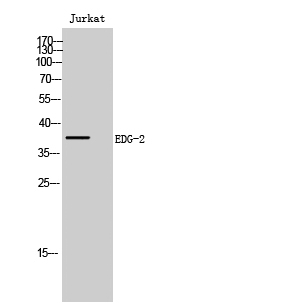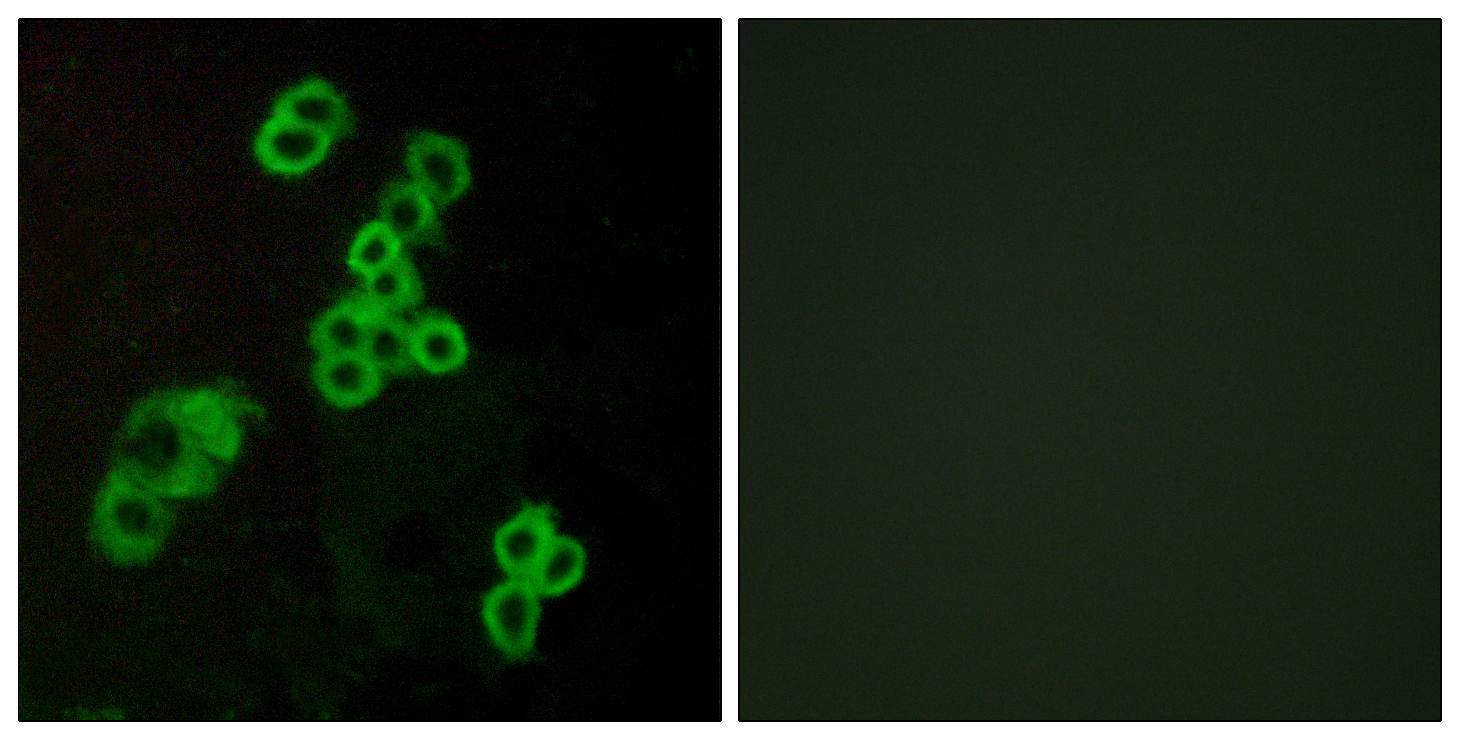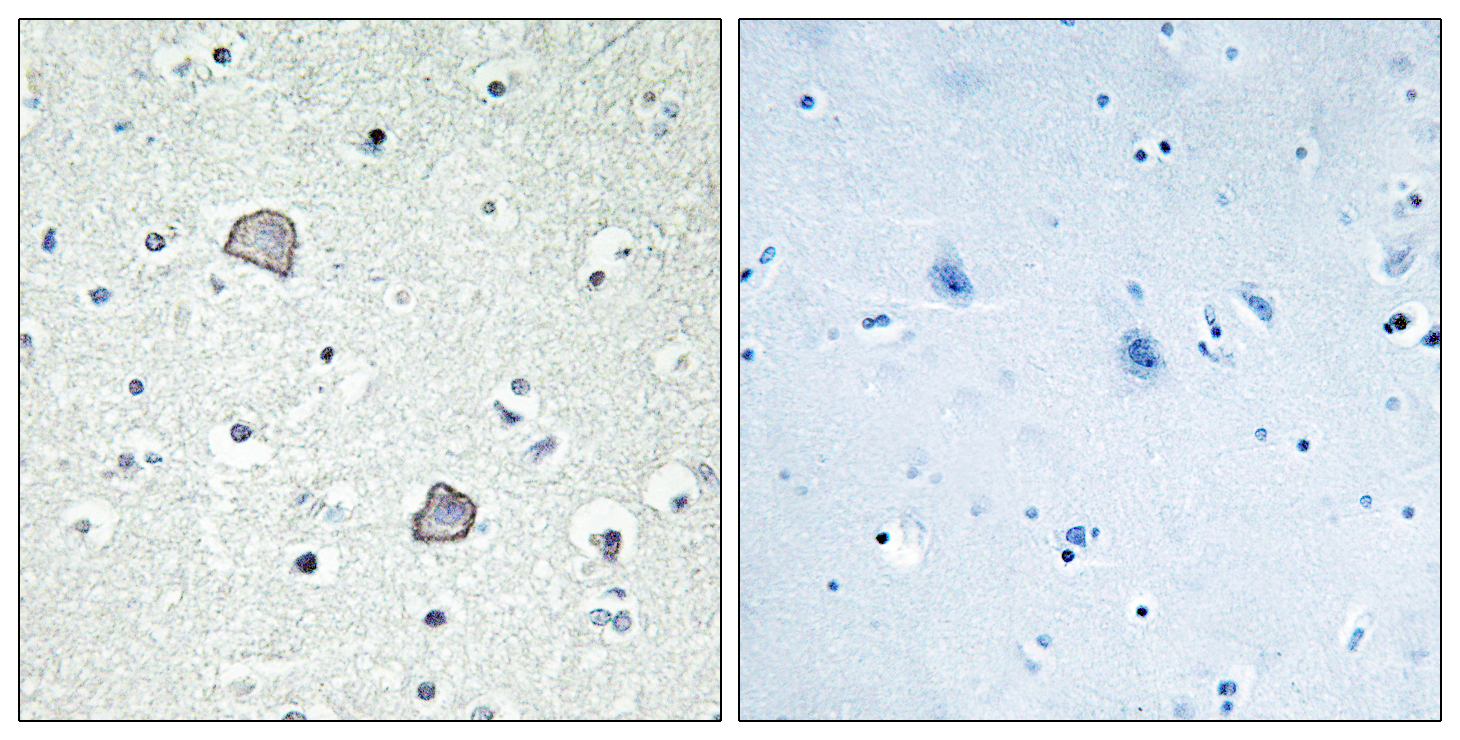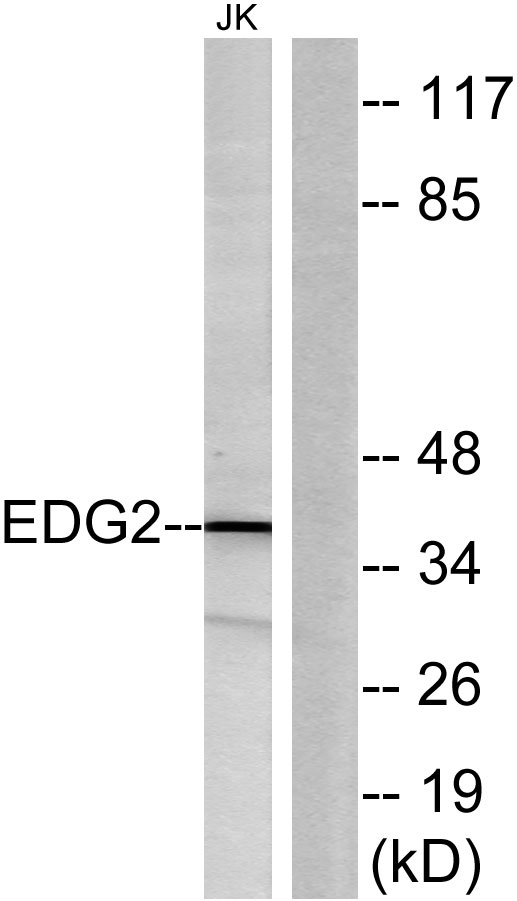EDG-2 Polyclonal Antibody
- Catalog No.:YT1461
- Applications:WB;IHC;IF;ELISA
- Reactivity:Human;Rat
- Target:
- EDG-2
- Fields:
- >>Rap1 signaling pathway;>>Phospholipase D signaling pathway;>>Neuroactive ligand-receptor interaction;>>PI3K-Akt signaling pathway;>>Gap junction;>>Regulation of actin cytoskeleton;>>Pathogenic Escherichia coli infection;>>Pathways in cancer
- Gene Name:
- LPAR1
- Protein Name:
- Lysophosphatidic acid receptor 1
- Human Gene Id:
- 1902
- Human Swiss Prot No:
- Q92633
- Mouse Swiss Prot No:
- P61793
- Rat Gene Id:
- 116744
- Rat Swiss Prot No:
- P61794
- Immunogen:
- The antiserum was produced against synthesized peptide derived from human EDG2. AA range:5-54
- Specificity:
- EDG-2 Polyclonal Antibody detects endogenous levels of EDG-2 protein.
- Formulation:
- Liquid in PBS containing 50% glycerol, 0.5% BSA and 0.02% sodium azide.
- Source:
- Polyclonal, Rabbit,IgG
- Dilution:
- WB 1:500 - 1:2000. IHC 1:100 - 1:300. IF 1:200 - 1:1000. ELISA: 1:5000. Not yet tested in other applications.
- Purification:
- The antibody was affinity-purified from rabbit antiserum by affinity-chromatography using epitope-specific immunogen.
- Concentration:
- 1 mg/ml
- Storage Stability:
- -15°C to -25°C/1 year(Do not lower than -25°C)
- Other Name:
- LPAR1;EDG2;LPA1;Lysophosphatidic acid receptor 1;LPA receptor 1;LPA-1;Lysophosphatidic acid receptor Edg-2
- Observed Band(KD):
- 38kD
- Background:
- lysophosphatidic acid receptor 1(LPAR1) Homo sapiens The integral membrane protein encoded by this gene is a lysophosphatidic acid (LPA) receptor from a group known as EDG receptors. These receptors are members of the G protein-coupled receptor superfamily. Utilized by LPA for cell signaling, EDG receptors mediate diverse biologic functions, including proliferation, platelet aggregation, smooth muscle contraction, inhibition of neuroblastoma cell differentiation, chemotaxis, and tumor cell invasion. Two transcript variants encoding the same protein have been identified for this gene [provided by RefSeq, Jul 2008],
- Function:
- function:Receptor for lysophosphatidic acid (LPA), a mediator of diverse cellular activities. Seems to be coupled to the G(i)/G(o), G(12)/G(13), and G(q) families of heteromeric G proteins.,similarity:Belongs to the G-protein coupled receptor 1 family.,tissue specificity:Expressed in many adult organs, including brain, heart, colon, small intestine, placenta, prostate, ovary, pancreas, testes, spleen, skeletal muscle, and kidney. Little or no expression in liver, lung, thymus, or peripheral blood leukocytes.,
- Subcellular Location:
- Cell surface . Cell membrane ; Multi-pass membrane protein . Endosome . Prior to LPA treatment found predominantly at the cell surface. Internalized after LPA treatment. Colocalizes with RALA in endocytic vesicles after LPA treatment. .
- Expression:
- Expressed in many adult organs, including brain, heart, colon, small intestine, placenta, prostate, ovary, pancreas, testes, spleen, skeletal muscle, and kidney. Little or no expression in liver, lung, thymus, or peripheral blood leukocytes (PubMed:9070858). Detected in lung fibroblasts from bronchoalveolar fluid from patients with idiopathic pulmonary fibrosis (PubMed:18066075). Detected in bone marrow-derived mesenchymal stem cells (PubMed:19733258).
- June 19-2018
- WESTERN IMMUNOBLOTTING PROTOCOL
- June 19-2018
- IMMUNOHISTOCHEMISTRY-PARAFFIN PROTOCOL
- June 19-2018
- IMMUNOFLUORESCENCE PROTOCOL
- September 08-2020
- FLOW-CYTOMEYRT-PROTOCOL
- May 20-2022
- Cell-Based ELISA│解您多样本WB检测之困扰
- July 13-2018
- CELL-BASED-ELISA-PROTOCOL-FOR-ACETYL-PROTEIN
- July 13-2018
- CELL-BASED-ELISA-PROTOCOL-FOR-PHOSPHO-PROTEIN
- July 13-2018
- Antibody-FAQs
- Products Images

- Western Blot analysis of Jurkat cells using EDG-2 Polyclonal Antibody diluted at 1:500

- Western blot analysis of KB 293T lysis using EDG-2 antibody. Antibody was diluted at 1:500

- Immunofluorescence analysis of MCF7 cells, using EDG2 Antibody. The picture on the right is blocked with the synthesized peptide.

- Immunohistochemistry analysis of paraffin-embedded human brain tissue, using EDG2 Antibody. The picture on the right is blocked with the synthesized peptide.

- Western blot analysis of lysates from Jurkat cells, using EDG2 Antibody. The lane on the right is blocked with the synthesized peptide.



